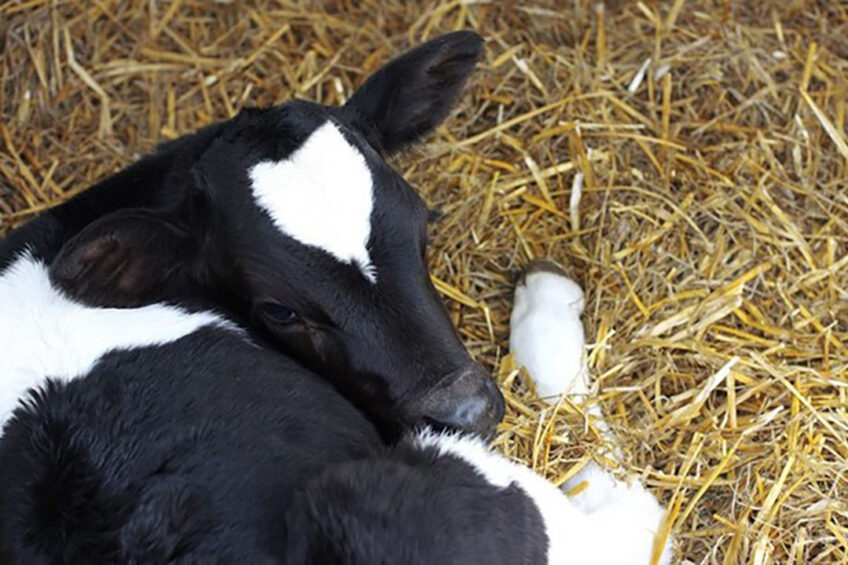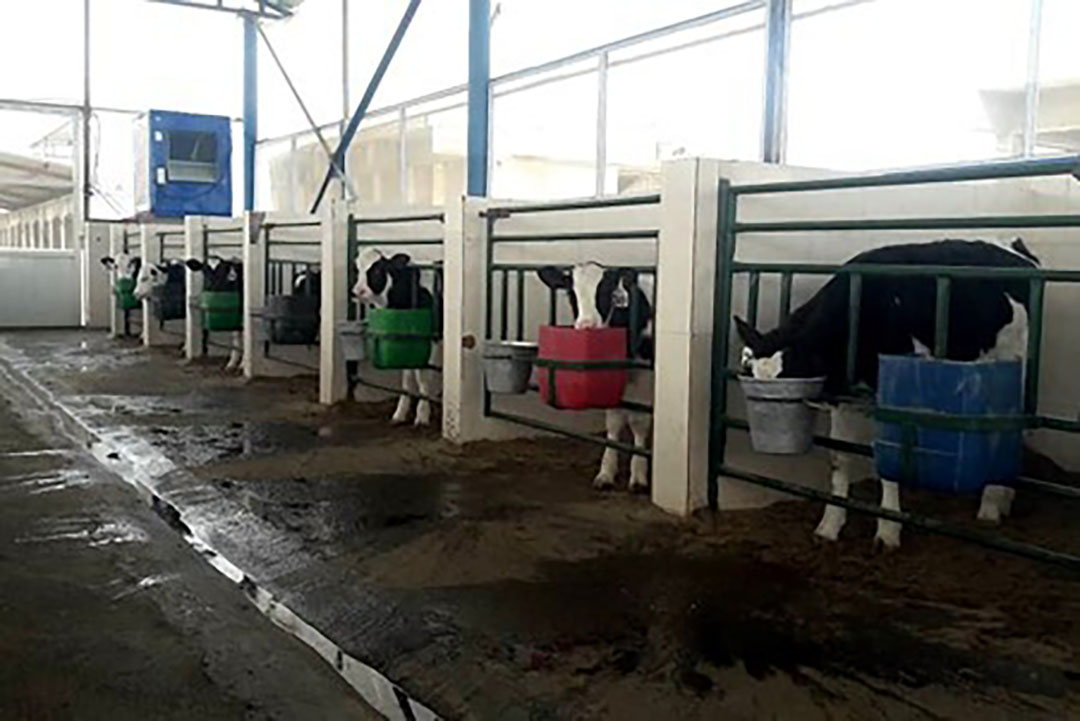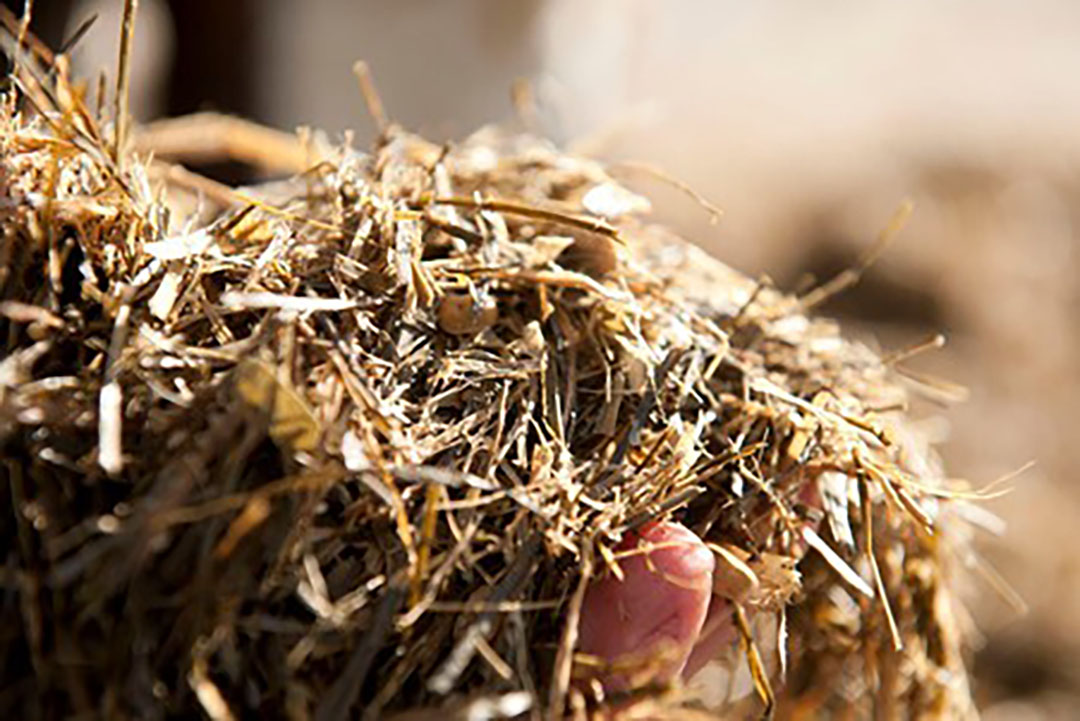Benefits of good rumen development in dairy calves

A properly functioning rumen incorporates several factors including microbial establishment and fermentation. Without the cooperation of all, rumen development in dairy calves, as well as function potential, is lessened.
Several studies have looked at the benefits of establishing good rumen development in dairy calves, and at feed ingredients that can have a positive effect on growth performance and rumen fermentation.
Like the young members of other species, at birth, dairy calves have digestive systems that are not fully developed, and in the calf, this includes the complex rumen. During the post-weaning period, support for good rumen development is critical because speedy maturation of this organ results in efficient feed intake and growth.
However, that’s not all. As Rebecca Hiltz (graduate research assistant) and Anne Laarman (assistant professor, Dairy Nutrition and Physiology) at the University of Alberta have noted, how we feed and treat our calves during their first 2 months of life affects milking performance in the first lactations. Specifically, for example, “every 1 MCal increase in [caloric] intake by 8 weeks old will yield an extra 1.8 kg of milk and 0.09 kg of protein and fat in the first lactation.” In addition, Pennsylvania State University professor of dairy nutrition, Jud Heinrichs, recently stated that poor rumen development typically costs a month of calf growth after weaning.
According to Dr Rasoul Kowsar, assistant professor of Animal Sciences at Isfahan University of Technology in Iran, the best weaning method is gradual, where about 10 to 14 days before full weaning, milk intake is reduced little by little. However, for reasons such as labour costs, weaning on many farms worldwide is carried out in a sudden rather than incremental way. Various feeding strategies and new ingredients therefore continue to be investigated for gut health benefits to newly-weaned dairy calves. Dietary components can positively affect both the rumen itself and its bacterial composition.

Fermented feed for rumen development in dairy calves
Kowsar, with colleagues at his university and at Isfahan Agricultural and Natural Resources Research and Education Center in Iran, published a study in 2020 in the journal, Nature, on the effects of feeding fermented soybean meal (FSBM). They note that fermentation is an efficient and cost-effective process that improves the quality of feed. During fermentation, proteins in SBM “are extensively hydrolysed to amino acids and low molecular-weight peptides due to microbial enzymatic activity and biochemical changes.”
Previous work by this research team has shown that feeding FSBM improves calf performance, increases starter intake and reduce weaning stress, mitigating the opposite effects that can typically occur during the immediate post-weaning period. However, at this point in time, Kowsar explains that “generally, fermented products are not used in calf nutrition due to the high price…[In addition], the production of FSBM needs complicated technology and the dairy farm couldn’t produce it and must purchase it.”
Study details
A total of 3 randomly-assigned groups of Holstein calves were fed diets with different levels of SBM and FSBM. The control diet had 27% SBM and no FSBM, the second 18% SBM and 9% FSBM, and the third, equal percentages (13.5%) of SBM and FSBM.
“On the basis of the present findings and our previous research, it can be concluded that feeding FSBM will improve the growth performance and starter intake of Holstein calves by changing the fermentation and abundance of some bacteria in the rumen,” the scientists state in their paper. Specifically, they found that Prevotella ruminicola bacteria in the rumen (a type of bacteria that breaks down protein and starch) responded positively to the presence of FSBM. This proteolytic bacterium effectively consumes NH3–N, peptides and, to a lesser degree, amino acids to produce microbial proteins and cellular energy.
However, other rumen bacteria that break down cellulose, such as Ruminococcus albus and Butyrivibrio fibrisolvens, reacted negatively to FSBM.
In terms of how much the positive effect of FSBM in the rumen has on P. ruminicola activity should be weighed against its negative effect on cellulolytic bacteria. Kowsar first notes that starter feed contains a lot of starch and protein. So, while it’s clear that an increase of P. ruminicola “could improve the rumen development and average daily gain of calves,” says Kowsar, the small amount of fibre in starter feed means that “the decrease in bacteria such as R. albus probably doesn’t impair calf performance.”

More results of fermentation and rumen development in dairy calves
Fermentation of SBM also increases the total protein content of this feed ingredient. Similarly to what was found in past studies, these scientists found that fermentation increased protein content from 43.3 to 48.2% (5%) and also modified the protein fractions.
The team fermented the SBM for 48 hours, and Kowsar says they used that time period “because it had the best results with a logical cost. A longer time maybe produces greater amounts of [protein] peptides, but it has more cost and increases the price of FSBM.”
The team chose to ferment SBM with Bacillus subtilis, a species which has been shown to have probiotic effects.
When asked how much of the overall positive effect of feeding FSBM is due to the presence of this bacteria itself – separate from the positive effects of FSBM on proteolytic bacteria in the rumen – Kowsar says that this is a good question. “I think it is impossible to separate the effect of Bacillus subtilis and fermented SBM,” he states, adding that “other researchers used other probiotics such as aspergillus and find similar results, and this shows FSBM has useful effects on animal performance, regardless of the probiotic bacteria type used in the fermentation process.”
The scientists urge for more studies involving a broader variety of bacteria and both liquid and solid phases of the rumen content to provide a deeper understanding of the effects of FSBM on the rumen ecosystem.
Effect of oat hay on dairy calf rumen
Chopped oat hay is another feed ingredient being studied to determine whether it has positive effects on growth performance, rumen fermentation and more of dairy calves during pre-weaning and post-weaning periods.
A paper about this was recently published by scientists at Poznań University of Life Sciences and the Kielanowski Institute of Animal Physiology and Nutrition (Polish Academy of Sciences) in Poland.
40 Holstein-Friesian calves were randomly assigned to 4 treatment groups. The groups received 1 of 4 diets. The control diet contained starter feed with no oat hay (OH), starter with 10% dry matter basis OH, starter with 10% dry matter basis OH plus OH also provided free-choice in buckets, and starter feed and free-choice OH in buckets. The calves were weaned on day 56, and the study continued until day 84.
No treatment effects were found for starter, starch, total dry matter intake, average daily gain, feeding efficiency, change in hip height, ruminal fluid pH, and concentrations of ruminal propionate and NH3-N, concentrations of urea nitrogen and non-eosterified fatty acids in the blood.
There were differences between treatments, however, in terms of ruminal total volatile fatty acids and amounts and ratios of other typical rumen biochemicals. These differences were highest in diets 2 and 3.
These scientists state that their results “indicate that starter feed containing chopped oat hay improves rumen fermentation parameters, which might allow successful transition from a pre-ruminant to mature ruminant state.” In addition, they note that providing chopped oat hay with pelleted starter feed seems to be a better method to accomplish this compared to free-choice supplementation.






